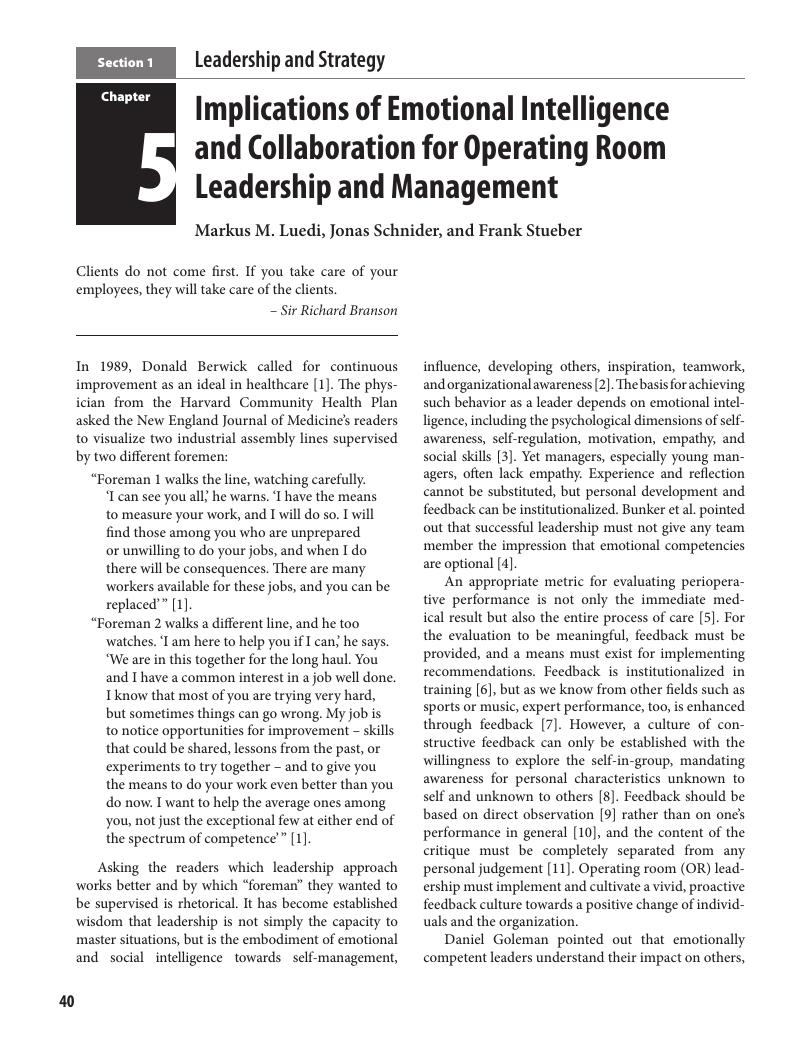Book contents
- Operating Room Leadership and Perioperative Practice Management
- Operating Room Leadership and Perioperative Practice Management
- Copyright page
- Dedication
- Contents
- Contributors
- Foreword 1
- Foreword 2
- Preface to the Second Edition
- Section 1 Leadership and Strategy
- 1 Leadership Principles
- 2 The Path to a Successful Operating Room Environment
- 3 Strategic Planning
- 4 Decision Making
- 5 Implications of Emotional Intelligence and Collaboration for Operating Room Leadership and Management
- 6 Operating Room Culture Change
- Section 2 Economic Considerations, Efficiency, and Design
- Section 3 Surgical and Anesthesia Practice Management
- Section 4 Nursing
- Section 5 Safety, Standards, and Information Technology
- Index
- References
5 - Implications of Emotional Intelligence and Collaboration for Operating Room Leadership and Management
from Section 1 - Leadership and Strategy
Published online by Cambridge University Press: 16 November 2018
- Operating Room Leadership and Perioperative Practice Management
- Operating Room Leadership and Perioperative Practice Management
- Copyright page
- Dedication
- Contents
- Contributors
- Foreword 1
- Foreword 2
- Preface to the Second Edition
- Section 1 Leadership and Strategy
- 1 Leadership Principles
- 2 The Path to a Successful Operating Room Environment
- 3 Strategic Planning
- 4 Decision Making
- 5 Implications of Emotional Intelligence and Collaboration for Operating Room Leadership and Management
- 6 Operating Room Culture Change
- Section 2 Economic Considerations, Efficiency, and Design
- Section 3 Surgical and Anesthesia Practice Management
- Section 4 Nursing
- Section 5 Safety, Standards, and Information Technology
- Index
- References
Summary

- Type
- Chapter
- Information
- Publisher: Cambridge University PressPrint publication year: 2018

